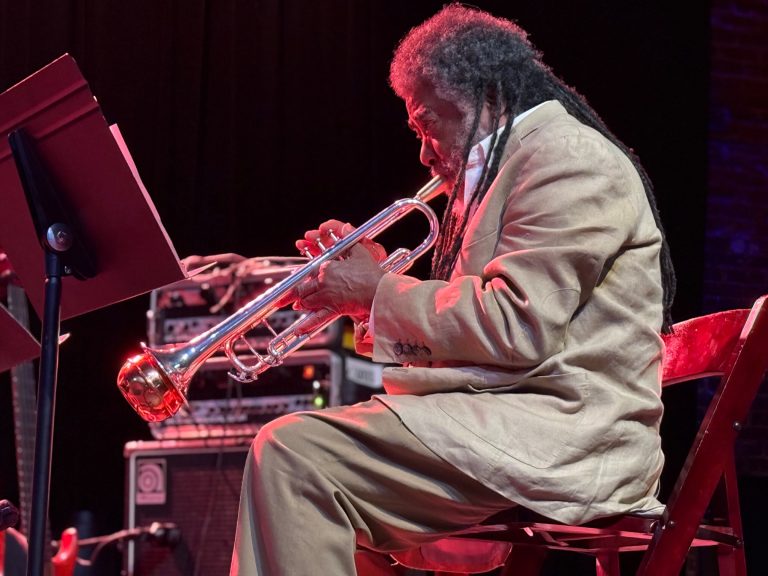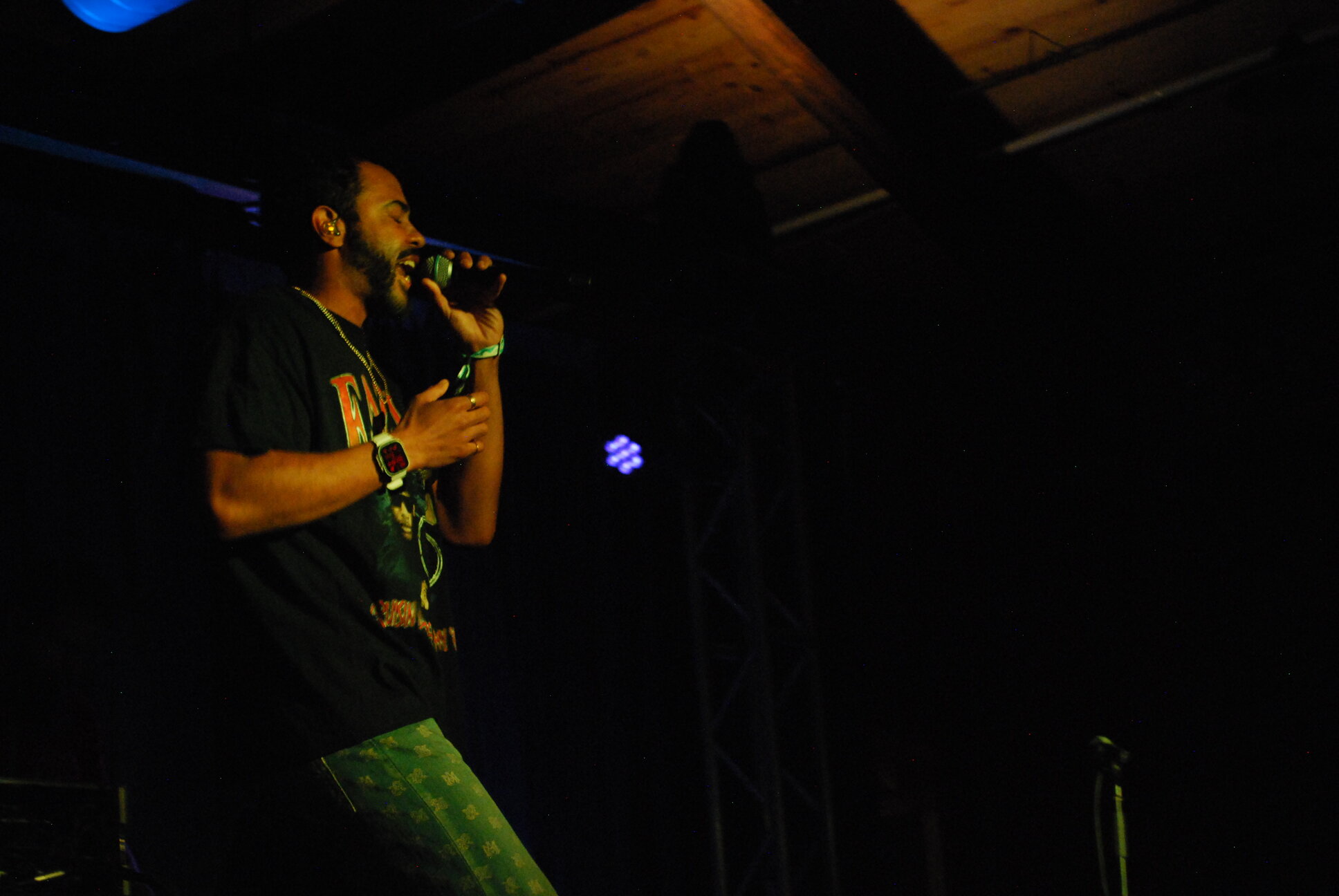You have to get your mind right before you begin the deliberations as to who you will see during your time at Knoxville’s Big Ears Festival. It’s not something to take lightly – if you’re lucky, you’ll end up with a wall covered in Post-It notes, interconnected strings, and pictures of various musicians, constantly rearranging things like some conspiracy theorist working through the final stages of some complex explanation for the existence of 5th dimensional transportation devices. Admittedly, you might not be that obsessive, but then again, after a few trips to Big Ears, you might be.
There’s a sense of magical realism to be experienced in the four days spent trekking across historic downtown Knoxville, a feeling that you’re untethered to the turbulence and worries of your normal life. It’s a wonderful and unpredictable and welcome sanctuary from the usual terribleness we’re witness to every single day. Your focus is on the music, on the people sharing in your common affections, on the joy felt as each artist breathes life into something previously bereft of existence. Big Ears is one of America’s greatest music festivals (likely its best), but more that that, it’s a place where we can get together to discover that there is more that binds us than there is that tears us apart.
As is my custom, I tried to pack in as many concerts as possible, cutting some short to make the run over to another venue and trying to plan out a course that allowed me to hit as many of my have-to’s as possible. I wasn’t entirely successful in that – I never am – but I wouldn’t trade a second of it for anything. Enjoy the rundown of my daily concert hopping below, and I’ll hopefully see you in Knoxville next year.
Thursday, March 27
Yo La Tengo at The Mill and Mine
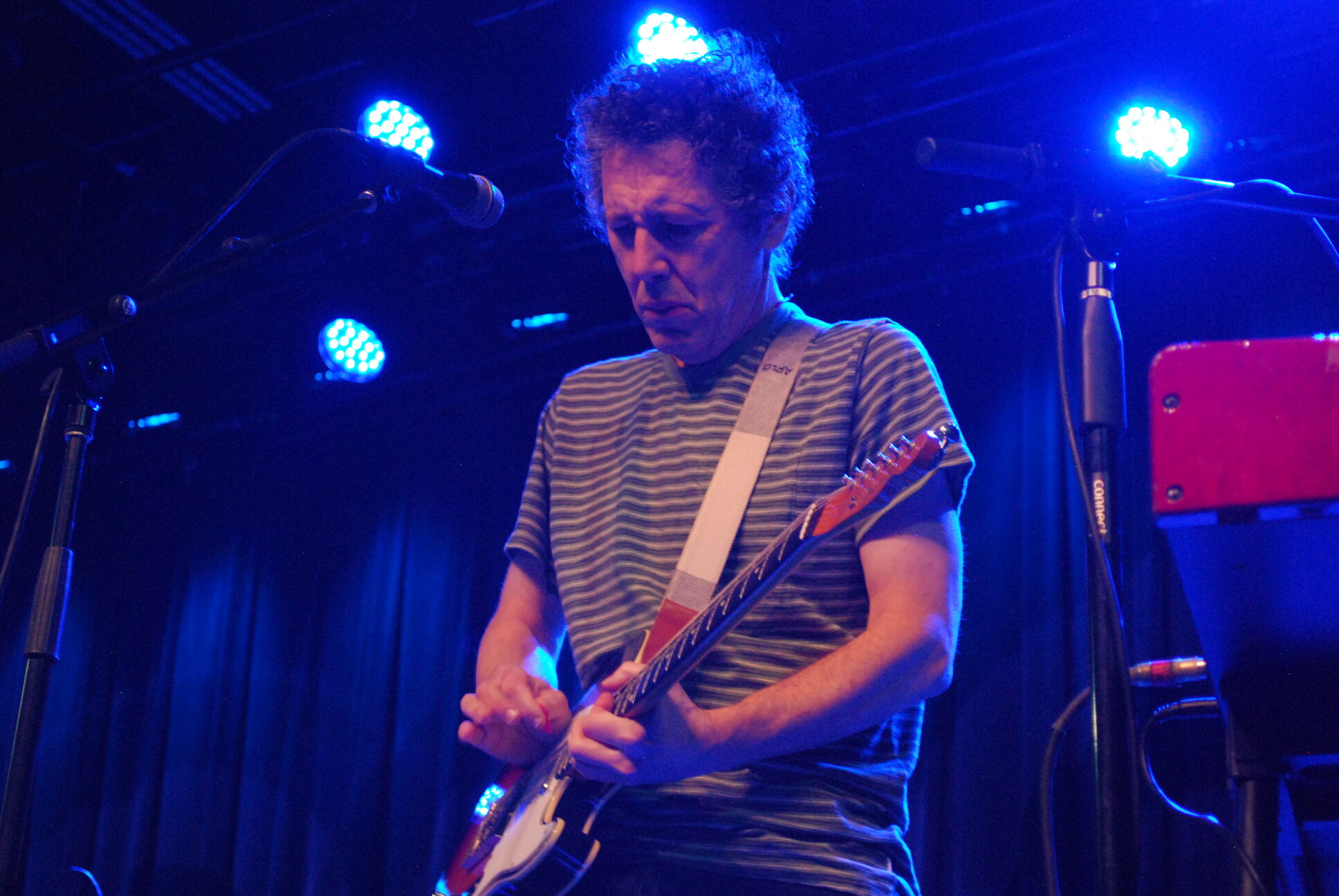
Despite having been a fan of Yo La Tengo since the release of 1997’s I Can Hear the Heart Beating as One, I have never seen them live, an egregious error to be sure. As I was walking toward The Mill & Mine down Gay Street, I was excited and electrified by the anticipation of what I was about to see, surrounded by crowds of people all heading in the same direction, lost in an ocean of band t-shirts, Converse shoes, and the blurred sounds of conversations detailing schedules and shows yet to come.
Once inside, I pressed my way to the front and secured my position. The band soon entered alongside guests William Tyler and John McEntire, both of whom would go on to play the entire set with them. The dual drum sets added the perfect weight and chest-kicking energy to their performance, a flurry of percussive flourishes surrounding Kaplan’s noisy guitarwork and McNew’s thumping basslines. Opening with “Ohm” from 2013’s Fade, they tore through their back catalog, hitting touchstones from Electr-O-Pura (“Tom Courtenay”), I Can Hear the Heart Beating as One (“Autumn Sweater”, “Moby Octopad”), and their most recent one, This Stupid World (“Sinatra Drive Breakdown”, Aselestine”, “Tonight’s Episode”) — among a few other detours from other albums.
It was loud and chaotic, and I enjoyed every second of it. I often judge the atmosphere of the festival based on the first show I see, and Yo La Tengo kicked it off better than I could have hoped for, a high energy explosion of new and old, rending the stage asunder and leaving us all breathless.
Steve Roach at the Church Street United Methodist Church
Collaborating with audio-visual collective Reflections, synthesist Steve Roach brought his cosmic ambience to the Church Street United Methodist Church, a place of sacred intent that allowed his aqueous melodies to roam and bloom. The remarkable visual presentation supported his music and seemed to induce a sort of trancelike state of euphoria, afterimages and waves of color were thrown against the church wall behind him, turning it into a canvas of liquid metal that expressed itself through a series of constantly shifting patterns. The longform performance was mesmerizing, almost hypnotic, leaving us woozy and slightly disoriented as we filed out of the church.
Beth Gibbons at the Knoxville Civic Auditorium
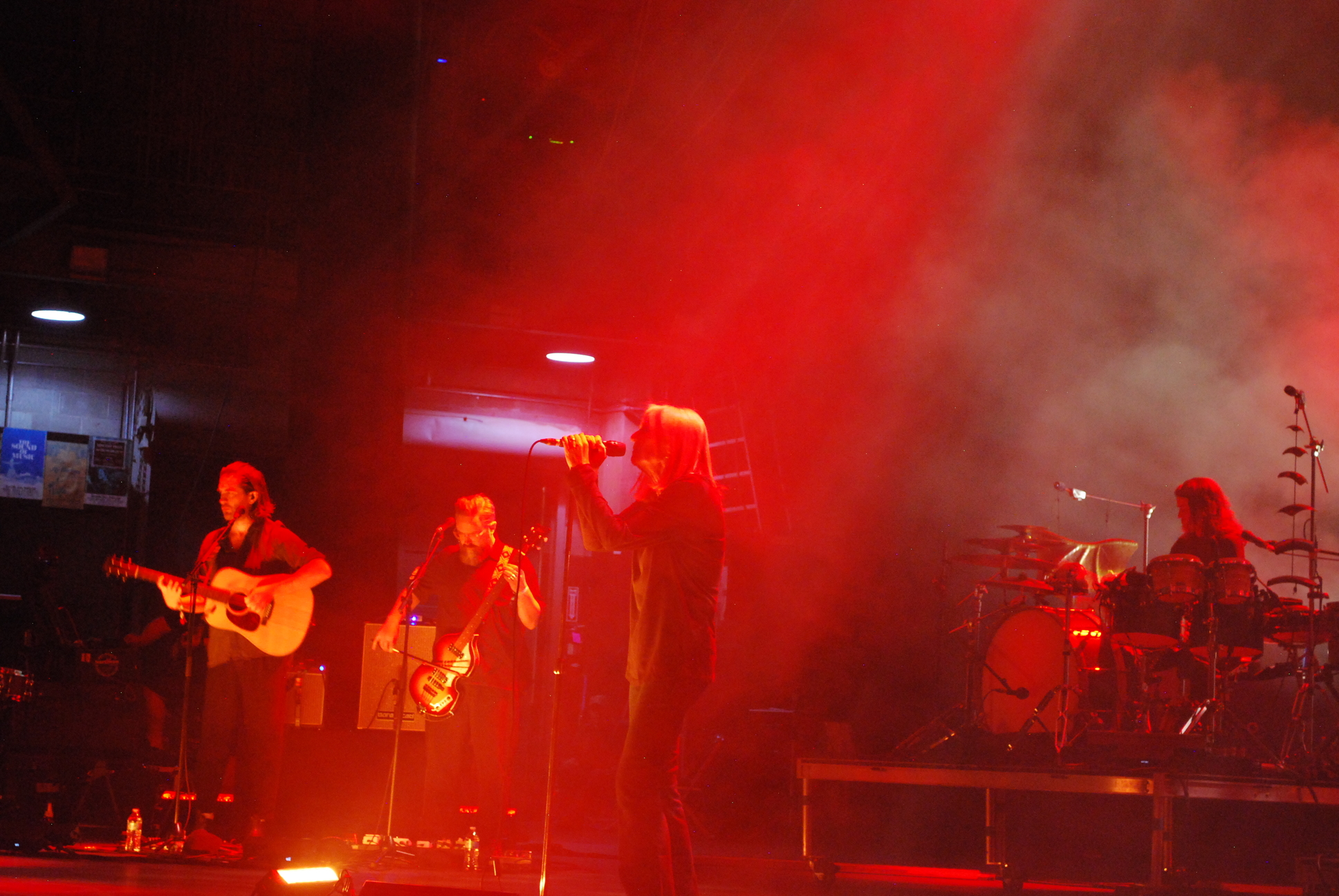
While we didn’t get a quasi-Portishead reunion (Geoff Barrow was at the festival performing with Beak>), Beth Gibbons’ performance was just a joy, with her playing all of her latest record, Lives Outgrown, with the exception of “Whispering Love”. She also threw in a few tracks from her collaborative album with Rustin Man (“Tom the Model”, “Mysteries”), but the biggest surprise came when she played “Roads” from Portishead’s debut album, Dummy. It felt like a gift, a moment shared between friends, forever etched into our hearts.
She had a full accompaniment, and the music swelled until the entire auditorium was engulfed in its presence. Her voice shivered and melted our hearts, the music rolling like a surge of twilight tides. She was quiet, barely saying a word between songs, but she eventually opened up and seemed to relax into the role of storyteller and musical contortionist. She even kneeled down at the edge of the stage to take photos with fans, signing various things and hopping off the stage to converse with a fan in a wheelchair. Her kindness and the heraldic beauty of the music made for an unforgettable show.
Darkside at The Mill and Mine
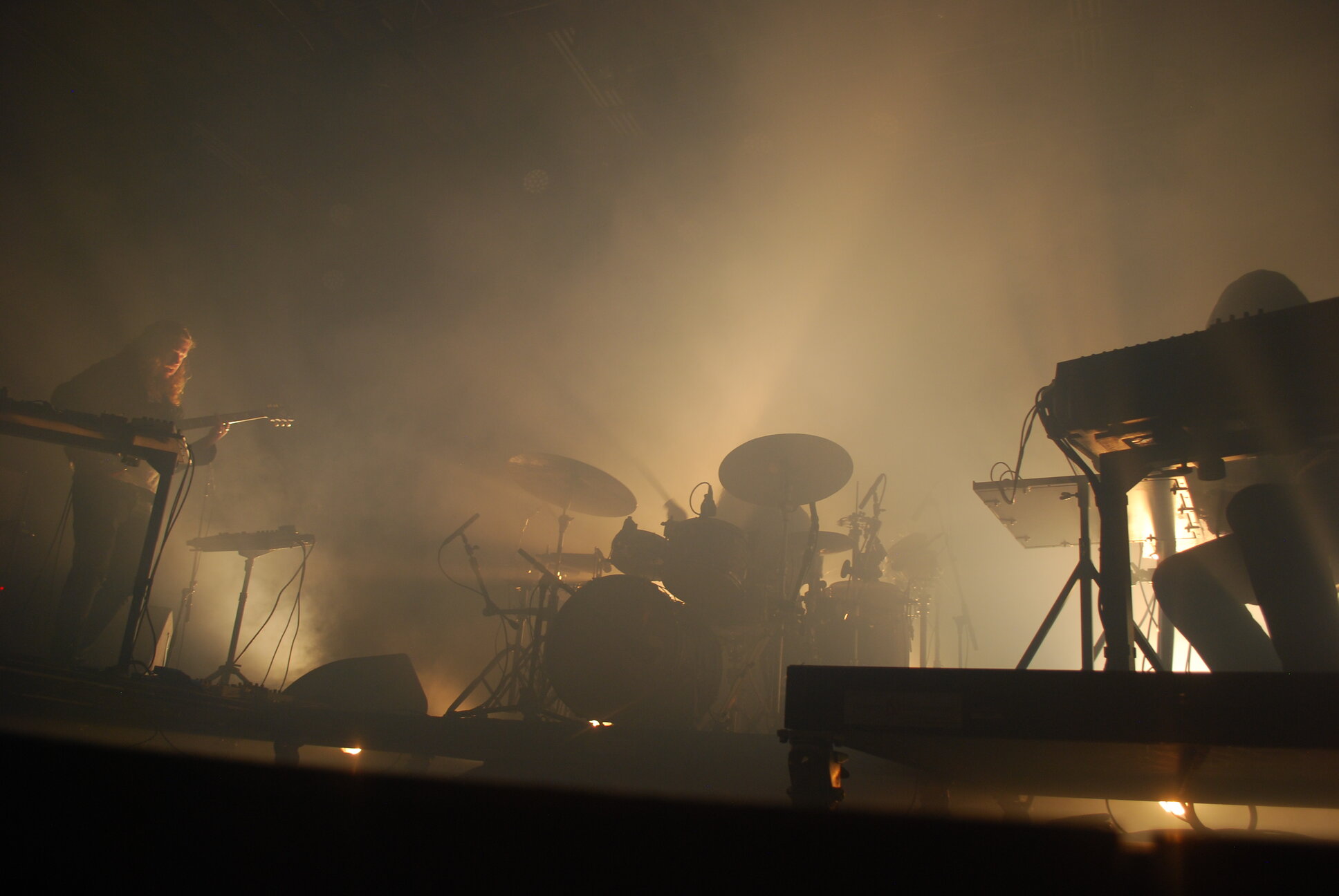
Darkside brought a dance party to The Mill and Mine to close out my first day in Knoxville. It was an electronic catharsis, an experimental deep dive into our collective consciousness — and there was more smoke rolling off the stage than I think I’ve ever seen at a concert before. Pulling from all their albums, the band offered up longform amalgams of various songs, stitching some together and expanding others until the seams started to rip apart. Bodies were heaving in unison, and necks were likely strained. It was a communal experience, and that is exactly what Big Ears is all about, making small moments that linger for years in your memory — sharing them with friends and strangers, euphoric and ready for whatever comes next.
Friday, March 28
Philip Glass Ensemble at the Tennessee Theatre

The Philip Glass Ensemble was performing Glass’ Music in Twelve Parts in its entirety over two days of the festival. Scheduling being what it is, I knew I would have to make a choice, and I decided to catch them performing the first half of the piece. Like with so many performances at Big Ears (it’s just the nature of having so many conflicting shows), I had to leave a bit early, but it was a momentous expression of Glass’ fluid composition, a conduit for his musical voice rather than an adaptation or reinterpretation. It was reverent and wholly revelatory, a group of musicians who seemed connected through some mystical force, each reacting and responding to the others instinctually.
Cassandra Jenkins at The Point
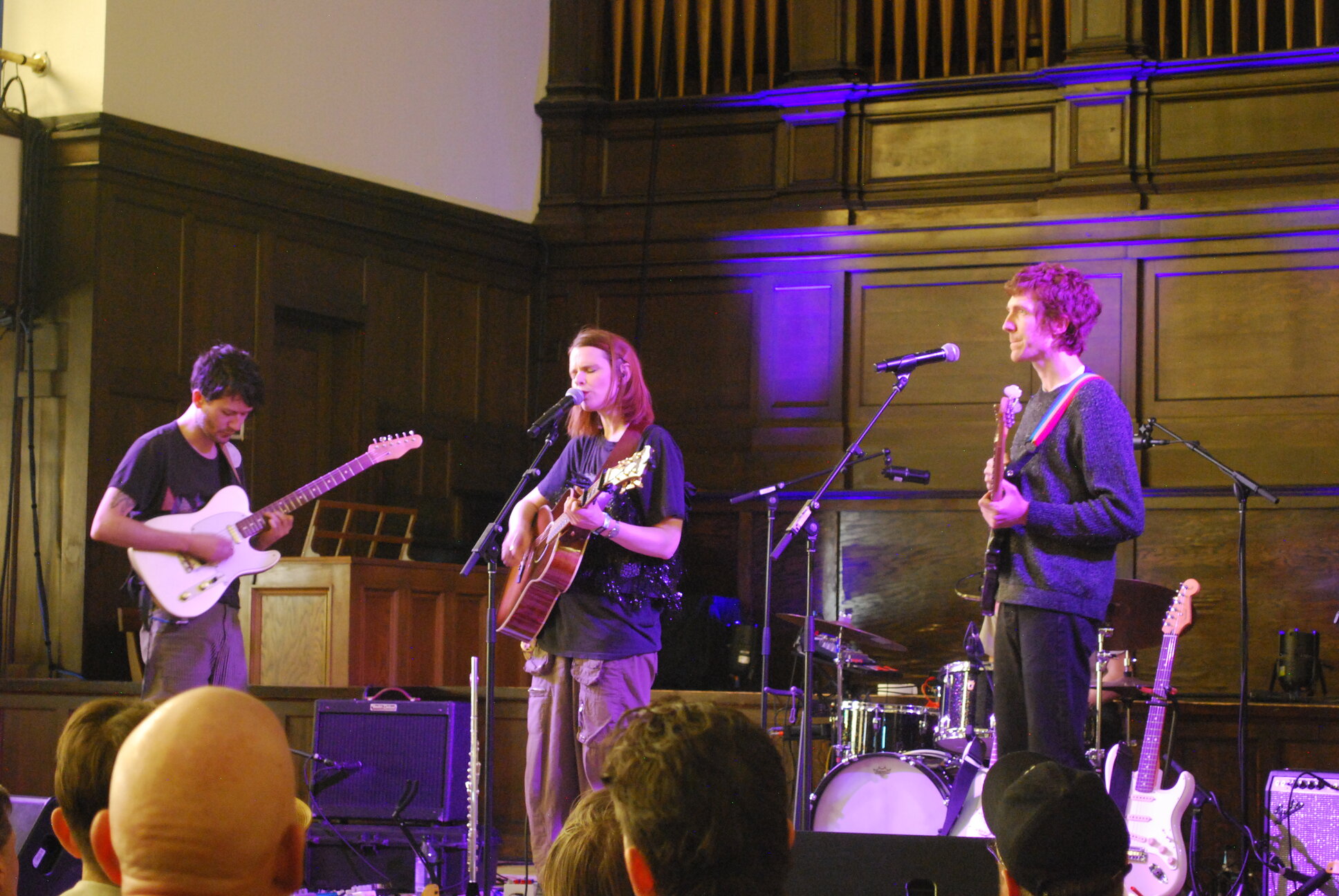
A few years ago, Cassandra Jenkins had to cancel her appearance at Big Ears. I was particularly disappointed as I had just become obsessive over her 2021 album, An Overview on Phenomenal Nature, so to have her back this year was a treat. Leaning more heavily into the material from last year’s My Light, My Destroyer, her performance felt like a conversation with a friend who you hadn’t seen in many years.
Tracks like “Devotion”, Omakase”, and “Aurora, IL” — the latter of which she explained came about as a direct result of her contracting Covid and having to cancel the previously mentioned Big Ears appearance — were given room to expand and follow their own muses. Her voice echoed within the smaller confines of The Point, a church where the sacred and the secular routinely mixed over the weekend. We were lifted, encouraged, as we felt the gravity of her words, the attention to the miraculous commonalities we shared, and the filled hearts we took with us.
Yo La Tengo & Sun Ra Arkestra at the Knoxville Civic Auditorium
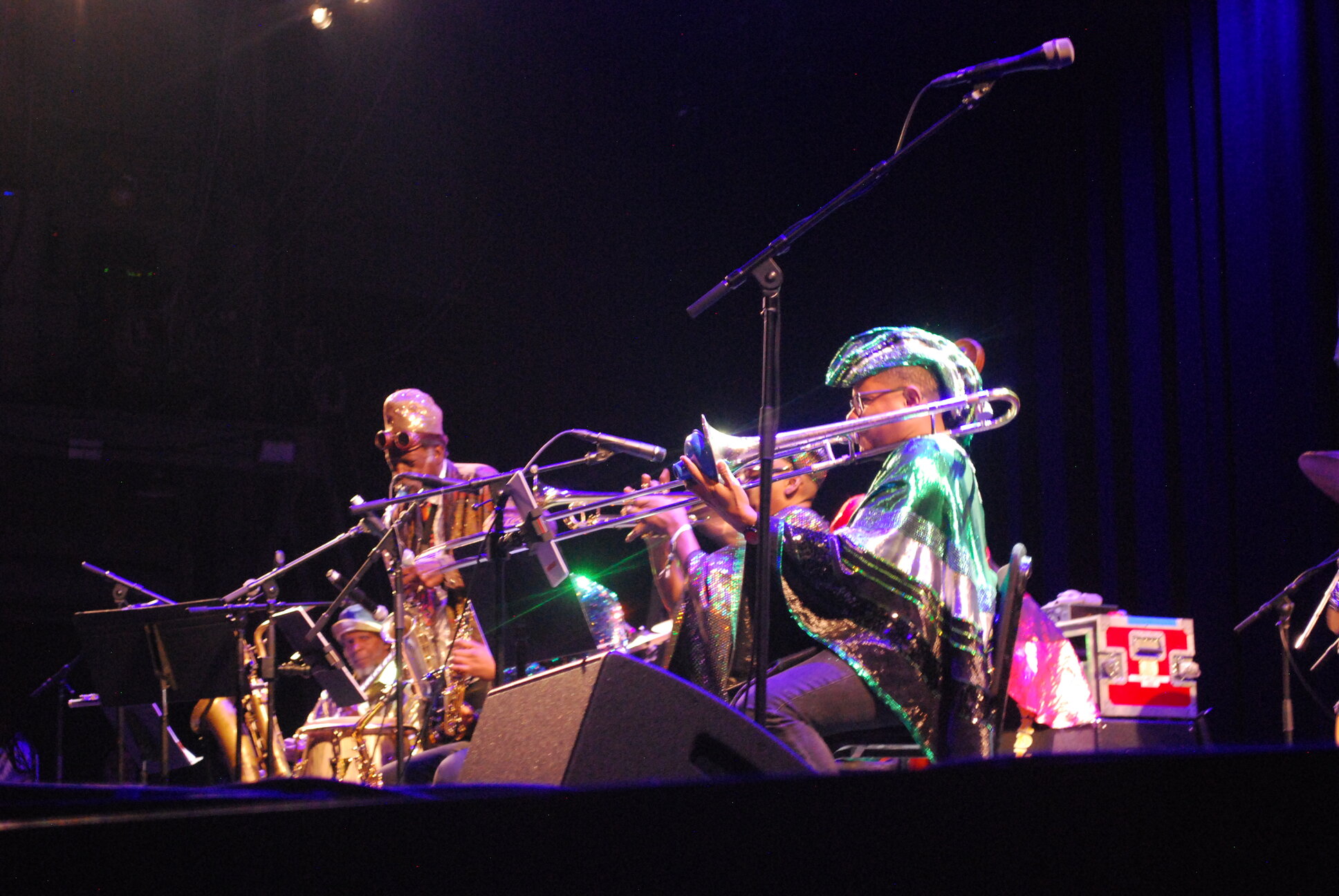
When I heard that Yo La Tengo would be performing alongside Sun Ra Arkestra, I was curious how the other’s songs would change in response to the collaborative environment. I can certainly say that the Yo La Tengo songs were far more dramatically altered than the Sun Ra songs, but it was a gloriously wild and weird set that combined overt theatricality with a noisy indie rock foundation. Moments of interpretive dance, a whole host of brassy eruptions, and a general feeling of cosmic opulence permeated the entire performance.
It was a bit haphazard at times, with the personalities of each band trying to steer the show in different directions, but overall, it was a wonderful show of communal influences and reverent musical dialogue. Their work on the Sun Ra track “Dreaming” was a particular highlight in the frenetic wash of sound and visual accompaniment — though they wove a complicated and intertwined expression of their shared rhythmic affections. Kaplan and the band were clearly there to support the mammoth beast that is the Sun Ra Arkestra, and their additions were subtle but absolutely necessary in the context of the show.
Jessica Pratt at the Tennessee Theatre
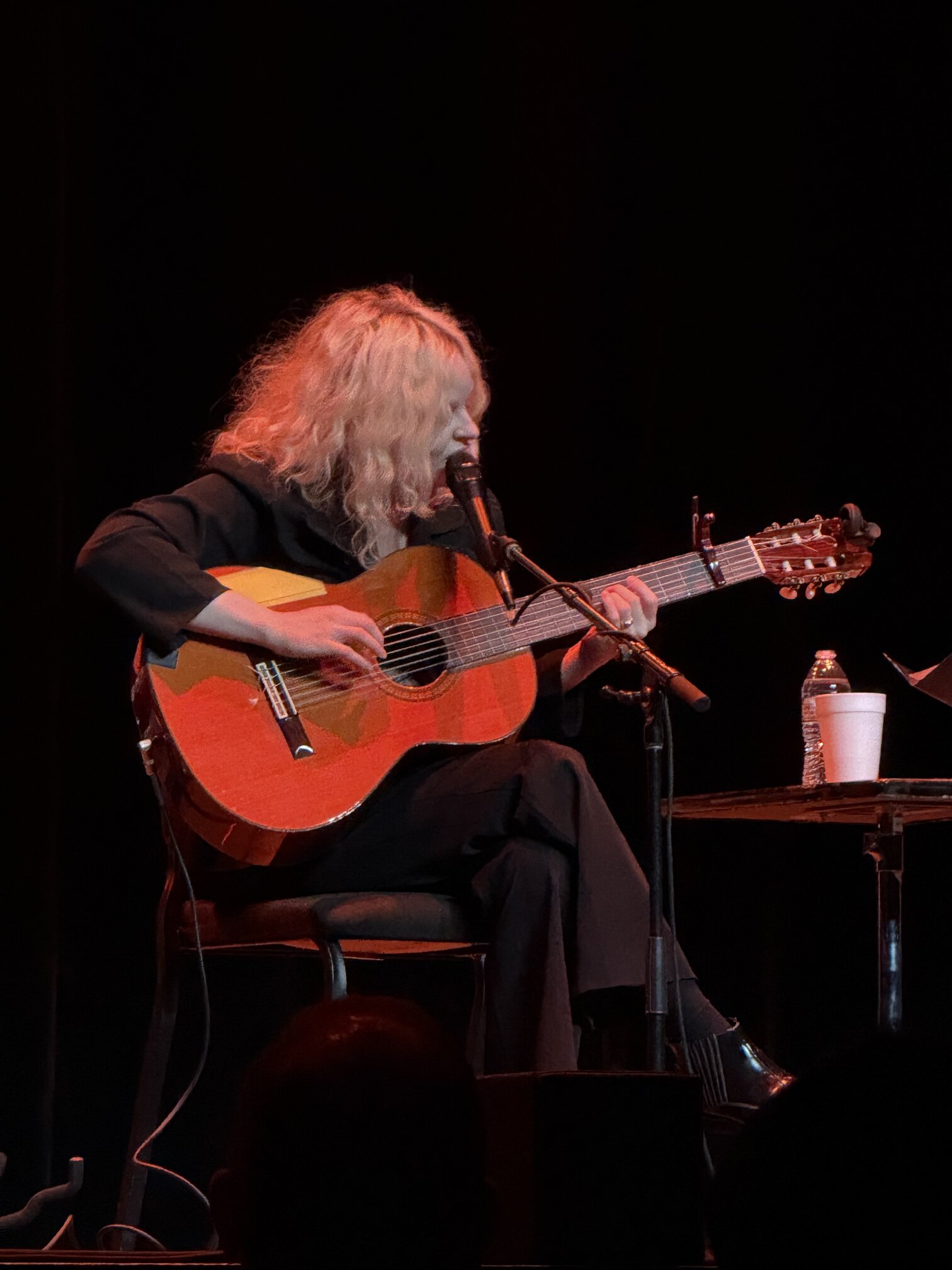
In my opinion, the Tennessee Theatre is the best venue used during Big Ears — it’s gorgeous, has great sound, and its relatively centralized location helps when developing a workable schedule. Needless to say, I was excited when Jessica Pratt was given this venue in which to cast her myriad of spells. To say that she filled the Tennessee Theatre with some magic is an understatement; she and her band conjured something supernatural, a vision of folk and rock that exists in some parallel timeline unaffected by the world’s turmoil.
She performed the majority of her latest record, Here in the Pitch, with the exception of “Nowhere It Was” and “Glances”, but I was surprised by how many songs she pulled from 2019’s Quiet Signs, tackling six of its nine tracks. Her voice rose like some elemental force, calm yet filled with unbelievable power, capricious but focused on the task at hand. As the measured sounds of saxophone, bass, keyboards, and drums whirled around her and her guitar, the stage was set alight in shimmering iridescence, offering a transportive glimpse into the raw construction of these songs.
Tarta Relena at the First Presbyterian Church
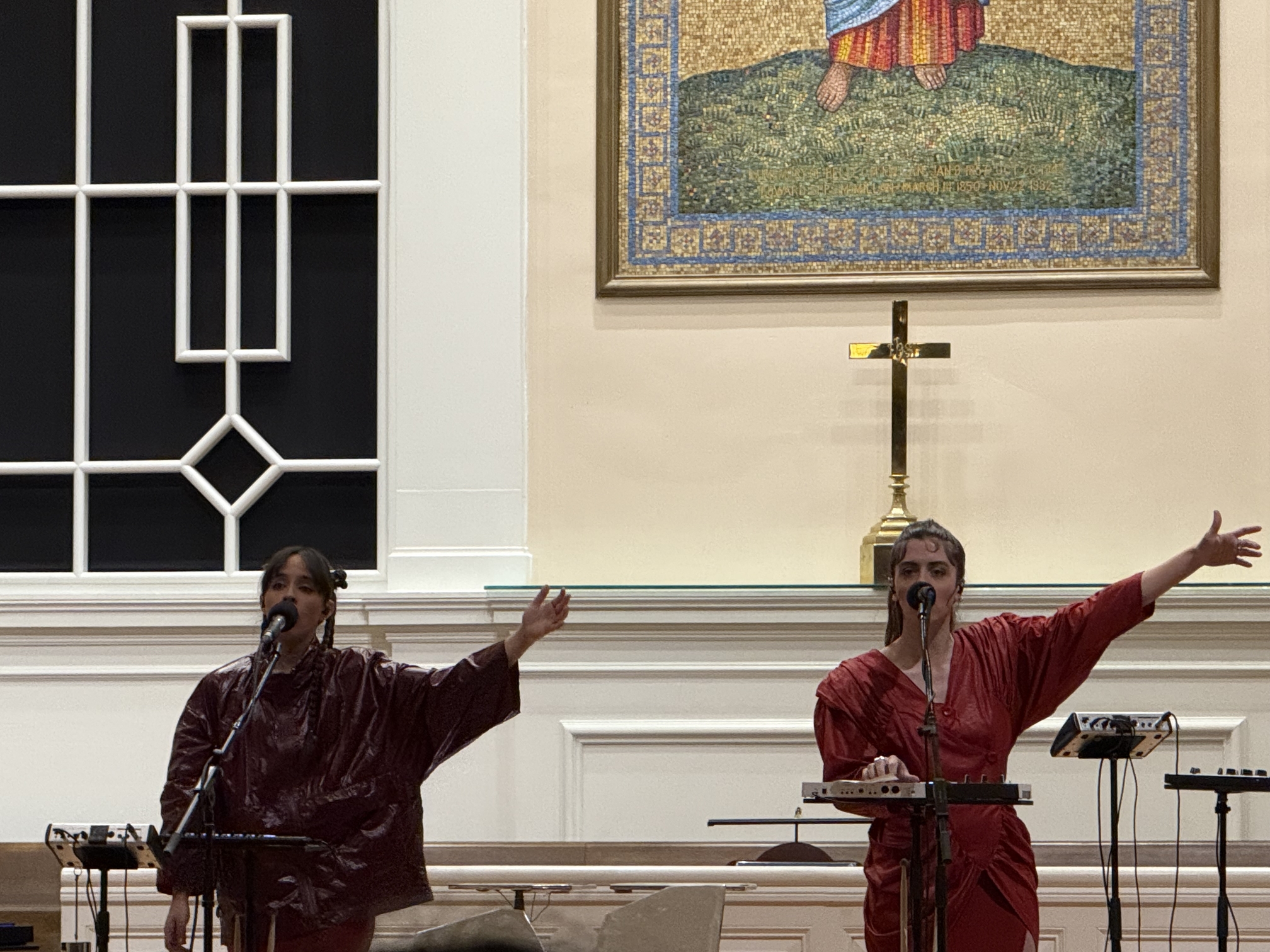
Big Ears is all about unexpected experiences. And I was certainly unprepared for the impact that Tarta Relena made as they performed at the First Presbyterian Church. With just their voices and some synth and drum pads, they built a sound that threatened to collapse the walls around us. And then, they go and perform an entire song backwards — yes, sung backwards and performed backwards. They then ran it forward, and we heard an entirely new composition. My jaw was dragging the ground, and it stayed there for the entire set.
It was the kind of performance that you don’t forget, no matter how many you see over the weekend. The cathedral (appropriately enough) harmonies they wrought wrapped around your head and your heart, filling the air with electricity and anticipation of what might happen next. The synths hung heavy, thumping and shaking and moving freely in that sacred space. Some small bit of magic had intruded into our reality, and we were there to witness its expression.
ANOHNI and the Johnsons at the Knoxville Civic Auditorium
There were tears, lots of tears. It was to be expected – I knew they were going to show themselves. Still, I wasn’t ready for the ANOHNI and the Johnsons show, but I acclimated quickly enough. Opening with “Scapegoat”, she briskly led the band through a roaring version of the song, a standout from her 2023 masterpiece My Back Was a Bridge for You to Cross. Her voice could stop time — and did, at least that’s how it felt. No one moved; no one dared to offer any distraction. Maybe I was just so focused on her, but the people around me seemed to disappear. She was singing to me. And she was surprising talkative, describing a conversation she had with Joan Baez and offering details on a film about the Great Barrier Reef that she will be working on.
Despite a handful of stellar moments, I’d say that her version of “Sometimes I Feel Like a Motherless Child” ranked among the evening’s most memorable experiences. She covered Lou Reed (“Coney Island Baby”) and Buffy Sainte-Marie (“Little Wheel Spin and Spin”) and delivered an ecstatic imaging of The Velvet Underground’s “I’m Set Free” for her encore. As I’m reliving the show in my memory, her performance of “You Are My Sister” was also something to behold, fragile yet commanding some desperate inner strength. It was perfect. It was unforgettable. It was ANOHNI, and to witness her magic was a privilege.
Les Claypool’s Bastard Jazz at The Mill and Mine
Equal parts dance party, industrial jazz explosion, and loose-limbed improvisation, Les Claypool led his Bastard Jazz collective through their paces at The Mill and Mine. His bass was slapped and plucked and metaphorically torn to shreds onstage. Coming at the tail end of the day, I wasn’t sure if I would be too tired to enjoy it, but I was jumping alongside everyone else as he and the band offered up their rapturous musical spontaneity. He’d go from one moment of jazz dexterity to a wash of metallic density, all in service to whatever muse happens to be perched on his shoulder. Hard melodic turns and rubbery rhythms were melted down and mutated, creating a new sound, one that catered to the uninhibited impulses of the band and their formidable frontman.
Saturday, March 29
Eiko Ishibashi at The Bijou Theater
Eiko Ishibashi had previously worked with director Ryusuke Hamaguchi as the composer for his films “Drive My Car” and “Evil Does Not Exist”. During the filming of the latter, he set about creating a sort of visual remix for Ishibashi to use in her live performances. For her Big Ears set, she produced a live soundtrack accompaniment to this edited and silent version of “Evil Does Not Exist”. It was at times aberrant and atonal with flourishes of gorgeous drones winnowing their way through weeping melodies. It was affecting and drew you into the film, capturing some of the natural wonder for which Hamaguchi is known. It was a mesmeric performance and a fitting tribute to the marriage of cinema and sound.
Emel at Jackson Terminal
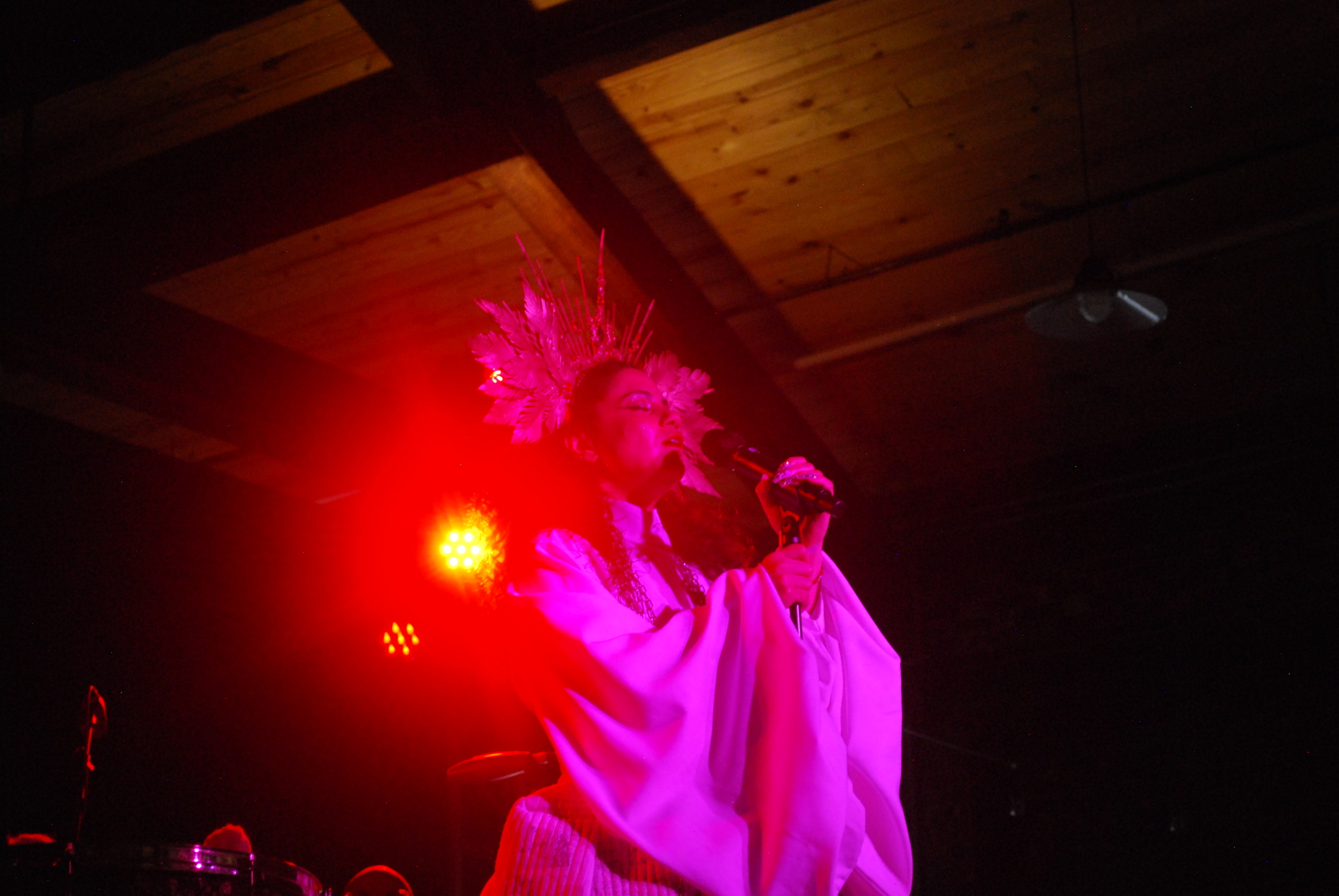
I wouldn’t be surprised if Tunisian-American musician Emel loosened some of the bolts and rivets from the ceiling of Jackson Terminal with her performance. Her voice couldn’t be contained in that small space, reaching higher and farther until it could be heard straining through the cracks in the walls. The music was a heady mix of Tunisian contours and vivid electronica, gargantuan beats with individual gravities that seemed to pull you in all directions at once. She wore a layered white dress, a silver necklace that coiled around her neck, and golden headpiece, lights reflecting off each, sending showers of prismatic colors into the audience. It was intoxicating and left you slightly disoriented, but you were aware that you’d witnessed something truly remarkable.
Julia Holter at the Tennessee Theatre
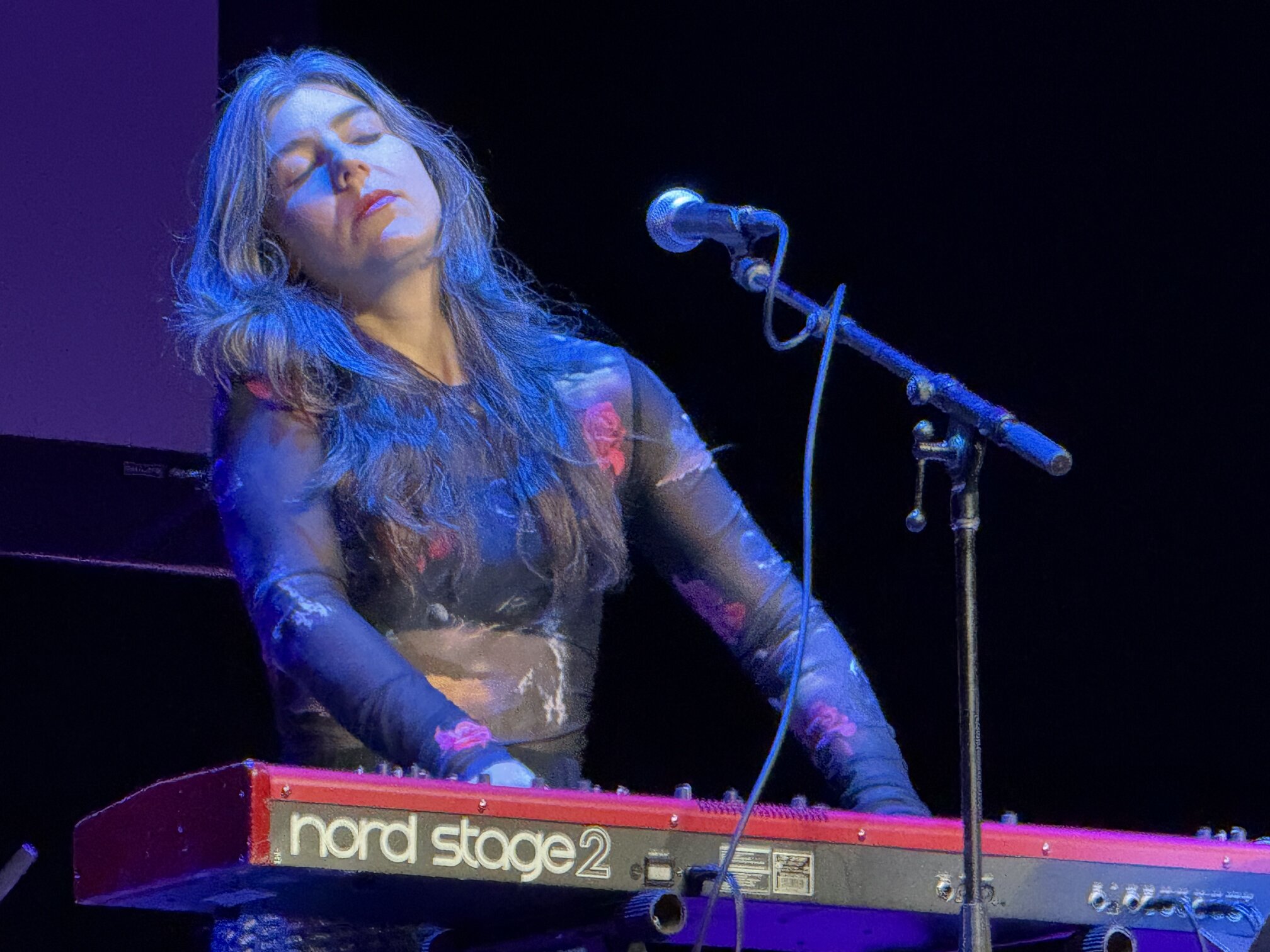
Julia Holter seemed to be operating on an entirely different plane than the rest of us, an oracle or storyteller with a direct connection to all our hearts and subconscious. Her indie rock, jazz, and electronic-tinged musings circled around the Tennessee Theatre, briefly touching down to inspire and entertain. Her serpentine voice called to us, a beautifully realized conduit for emotion. As illustrations were projected onto the screen behind the band, we were treated to some wonderfully immersive sounds. The musicians surrounding her matched her point for point, providing a suitable foundation on which to marvel at the wonders of their combined creativities. She was charismatic, and her music seemed to blossom to match the opulence of its environment — a set of magnificent songs delivered with a rich emotional resonance.
William Basinski at the Church Street United Methodist Church
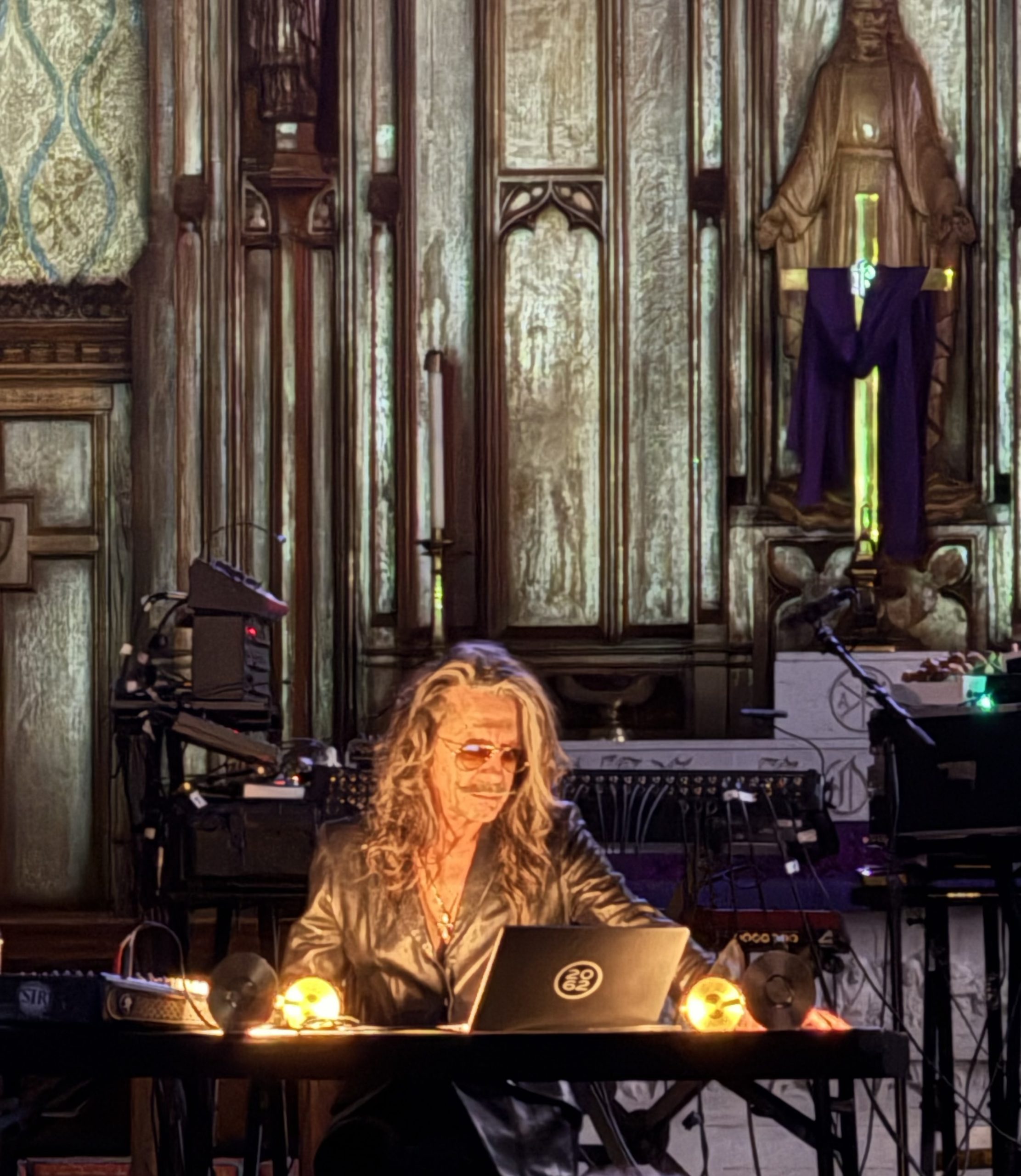
Aided by audio-visual collective Reflections (who also handled the light work for Steve Roach), William Basinski’s performance of his latest longform piece, “Aurora Terminalis”, was akin to watching a medieval alchemist turn lead into gold. It began life as a clanging beast before settling into a more ambient creature, soft tones intermingling with shimmers of iridescent melodies. We luxuriated in his work, embraced its total command of that holy space. We felt drawn into an inescapable cycle of tidal sounds as the lights played tricks on our eyes. It was over far too quickly, and the world outside felt far removed from the beauty we’d witnessed inside.
Arooj Aftab at the Knoxville Civic Auditorium
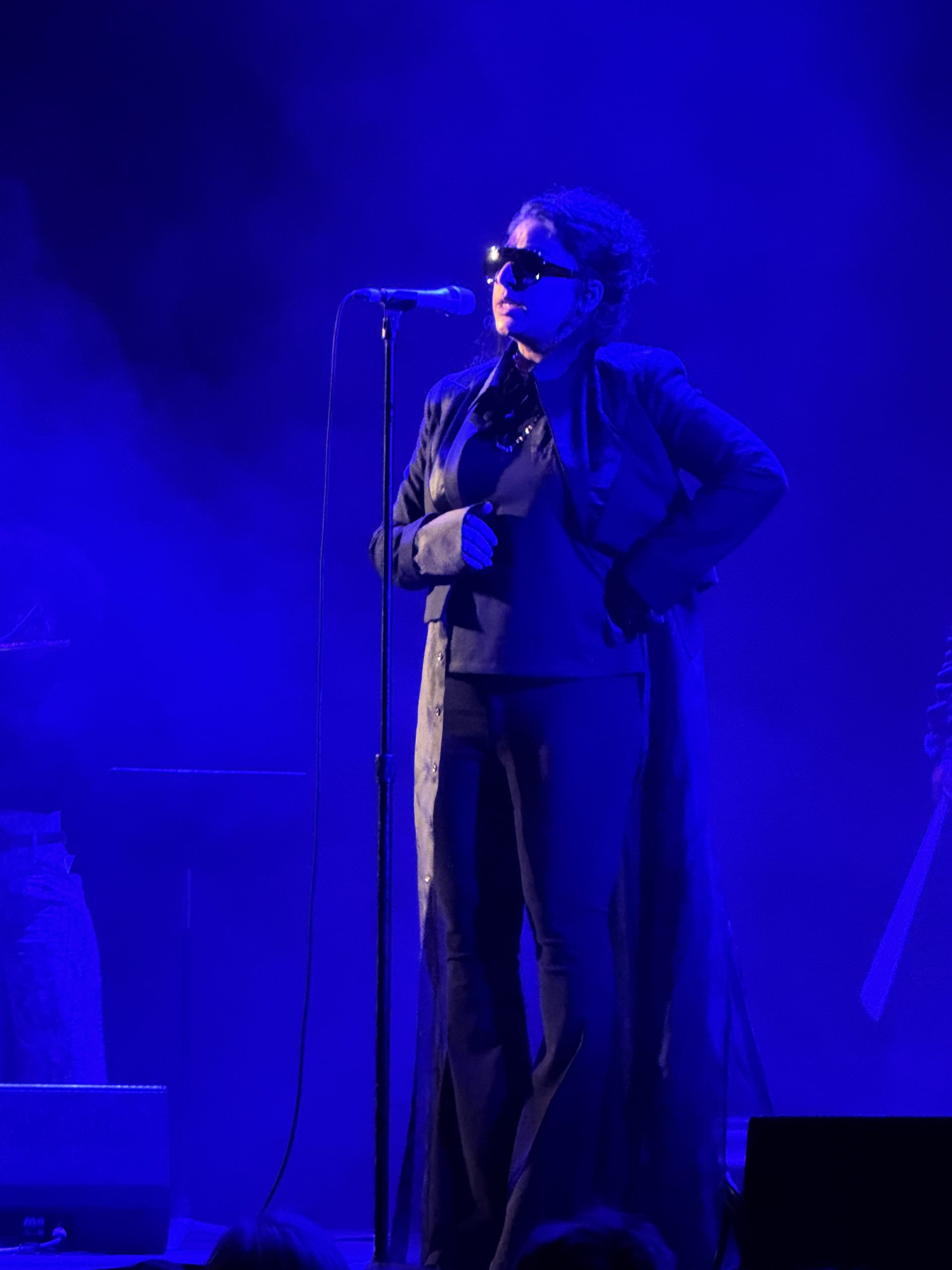
Not even a lingering case of bronchitis (I believe) could keep Arooj Aftab from holding us spellbound as she offered up a selection of dusky, twilight songs that echoed across the room. Seeing Aftab is practically a rite of passage for Big Ears attendees, as she has been a ubiquitous presence at the fest over the last five years. Her sets are casual yet filled with a sense of mystical possibility. She culled a set from her albums which revealed the intricate nature of her work while also highlighting the spry melodicism that infuses it with a rare feeling of wonder. Big Ears wouldn’t be the same without her.
DakhaBrakha at the Tennessee Theatre
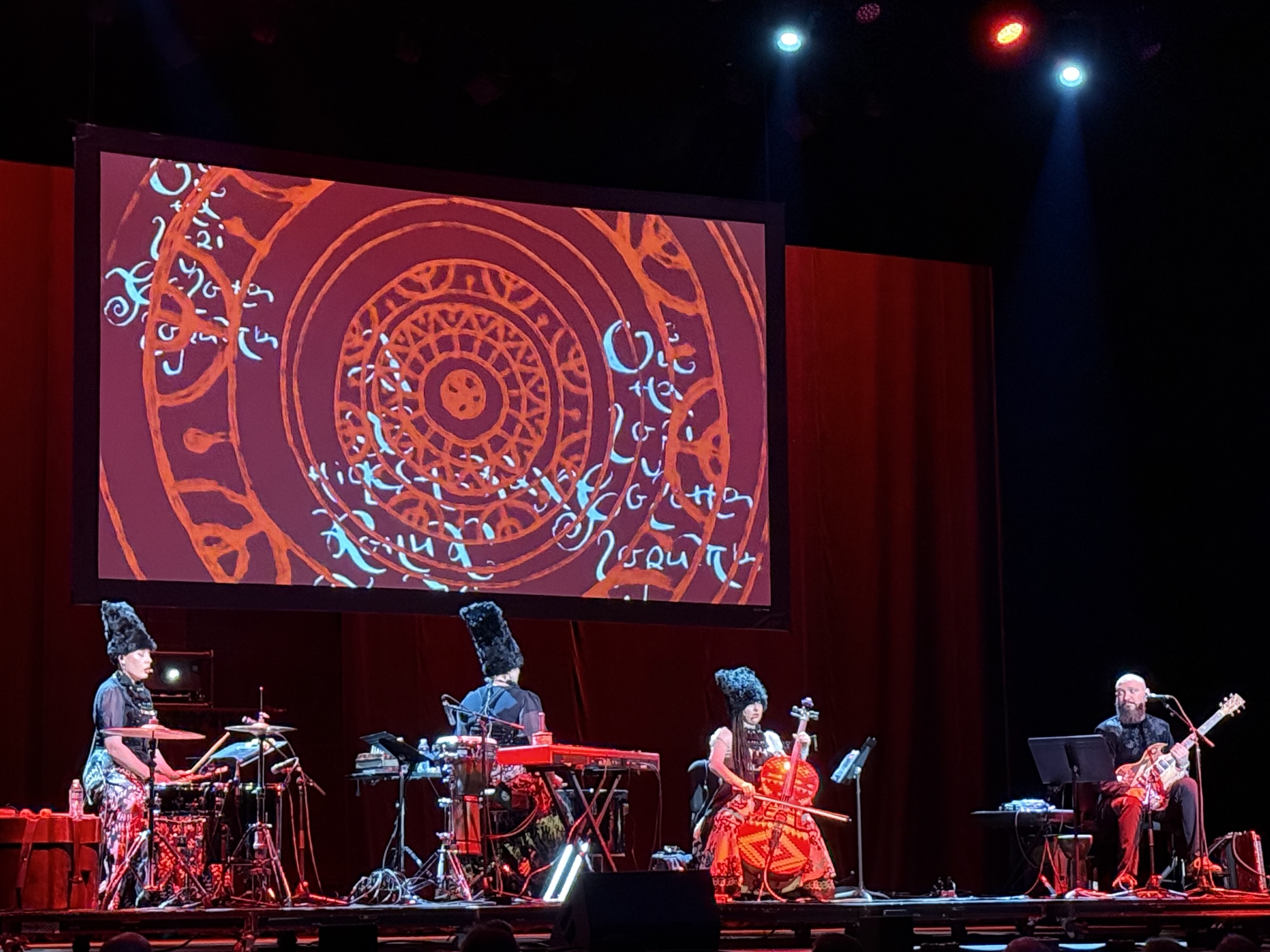
When Ukrainian band DakhaBrakha began their set, people were motionless, eyes fixated on the stage as the quartet offered up a percussive set of folk and rock-tinged songs. When the band thanked those in attendance for their support, the hall erupted in a chorus of clapping and enthusiastic shouts. Ukrainian flags were waved, and the standing ovation went on for some time. The songs were often thunderous, occasionally measured, and always informed of the conflict currently tearing the band’s homeland apart. The performance was moving and visceral, a perfect summation of the anger and frustration and uncertainty that they must be feeling.
Waxahatchee at the Knoxville Civic Auditorium
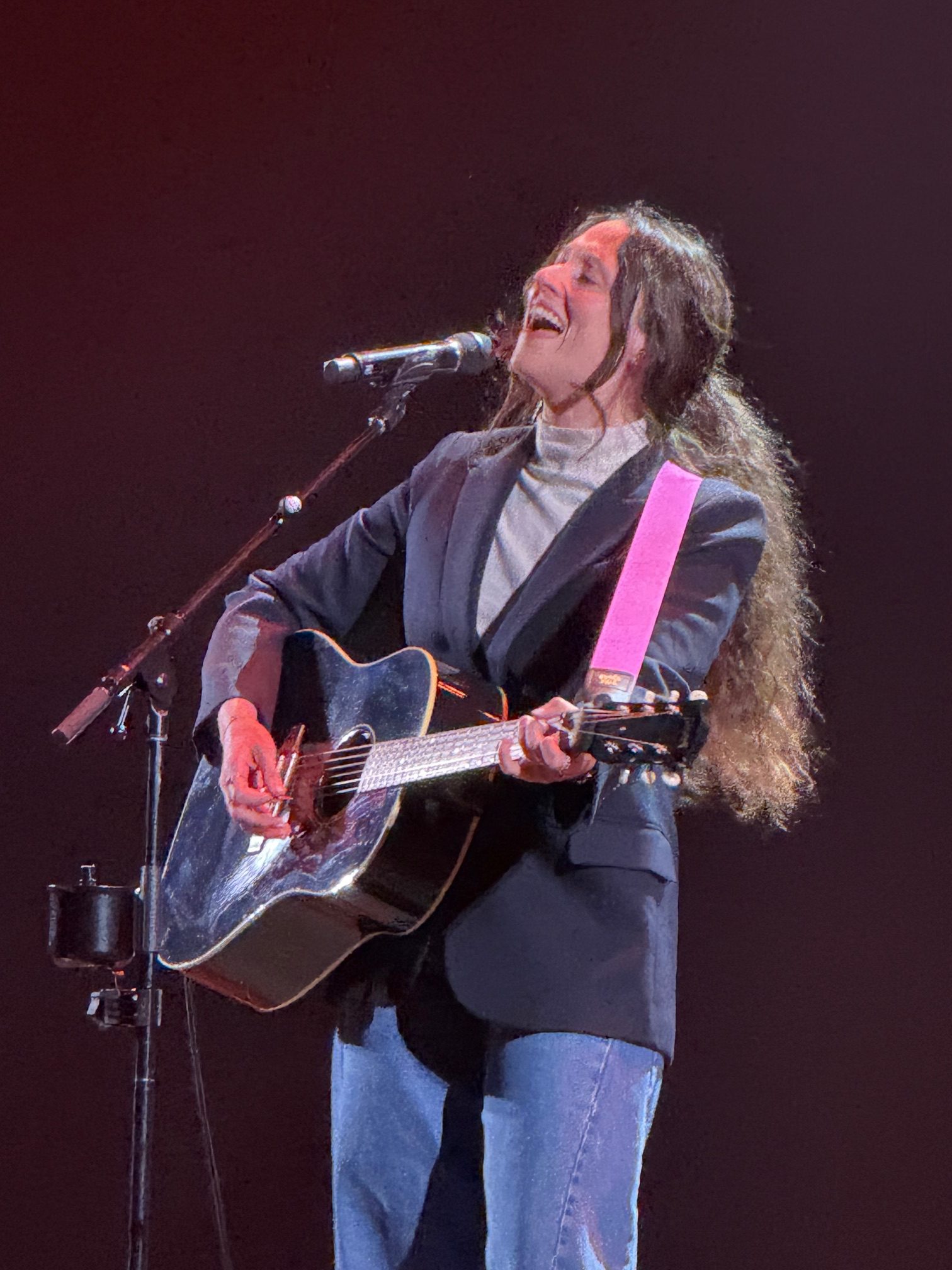
I’ll be honest — I always hope for full band support from the artists at Big Ears. And this is funny, as some of the most unexpectedly moving sets have come from musicians with sparse instrumentation. Just look at Iron & Wine’s set from 2023. So I was initially disappointed that Katie Crutchfield of Waxahatchee had such a minimal stage setup. I should have reminded myself that appearance can be deceiving. With just a few guitars herself and the backing of a friend on various other instruments, the auditorium was ringing with the clear cadence of her voice, amplified through sheer force of will to reach everyone present. Her performance of “Right Back to It” was remarkable, a fitting tribute to the studio version, and the others were just as calmly devastating.
Backed by producers William Hutson and Jonathan Snipes, Daveed Diggs left little standing in his time on stage at Jackson Terminal. The set was split between a more intense first half and a slightly more considered second half (where frequent live collaborator Counterfeit Madison offered a touch of old school soul), though Diggs never really abounded his hard-edged rhymes and the cathartic impact of Hutson and Snipes’ music. In comparison to the acceleration and amplitude of the set’s opening run (“Change the Channel”, “La Mala Ordina”, “Body for the Pile”), Madison’s affecting voice and piano were a balm to our ears later on. You could feel the electricity running through the crowd, a force calling to us to match his energy, and we responded in kind, a group of adrenalized people with voices raised together and whose bodies were wracked with sweat and catharses by the end of the set.
Sunday, March 30
Tindersticks at the Tennessee Theatre
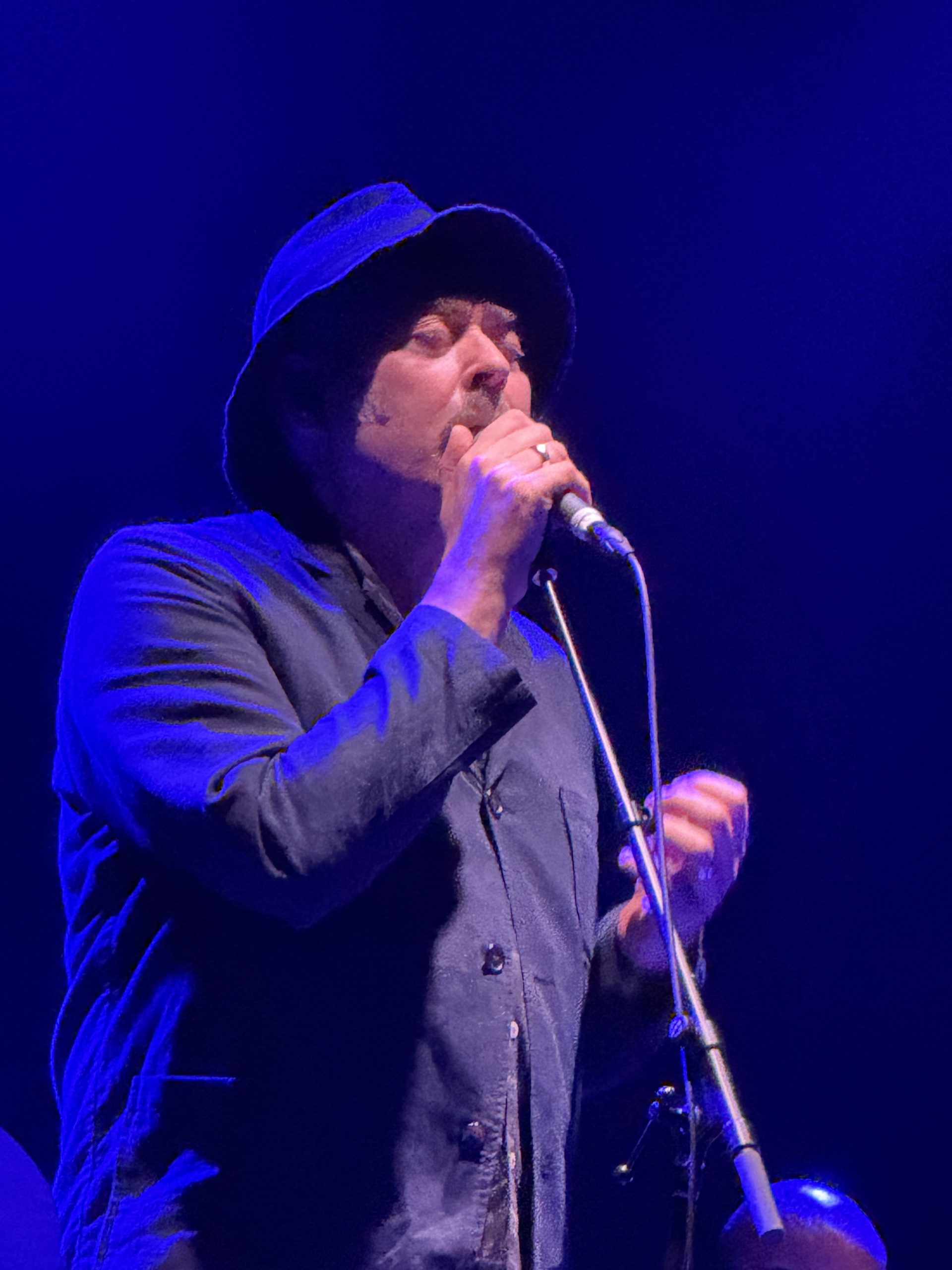
Playing seven of the nine tracks on their latest album, Soft Tissue, Tindersticks were clearly focused on their latest material for their set at Big Ears. I maybe would have liked to hear something from their first two albums, but it was still a phenomenal set despite my possibly irrational expectations. Known for the abject beauty of their compositions and singer Stuart Staples’ quivering voice, the band used their time onstage as a vehicle to highlight tracks for those who might not have been as familiar with their earliest releases. “The Secret of Breathing”, “Willow, and “Don’t Walk, Run” were clear favorites among the crowd and allowed the band room to stretch their legs and explore the internal mechanics of these songs in a way that we’d never heard before.
Mabe Fratti at Jackson Terminal
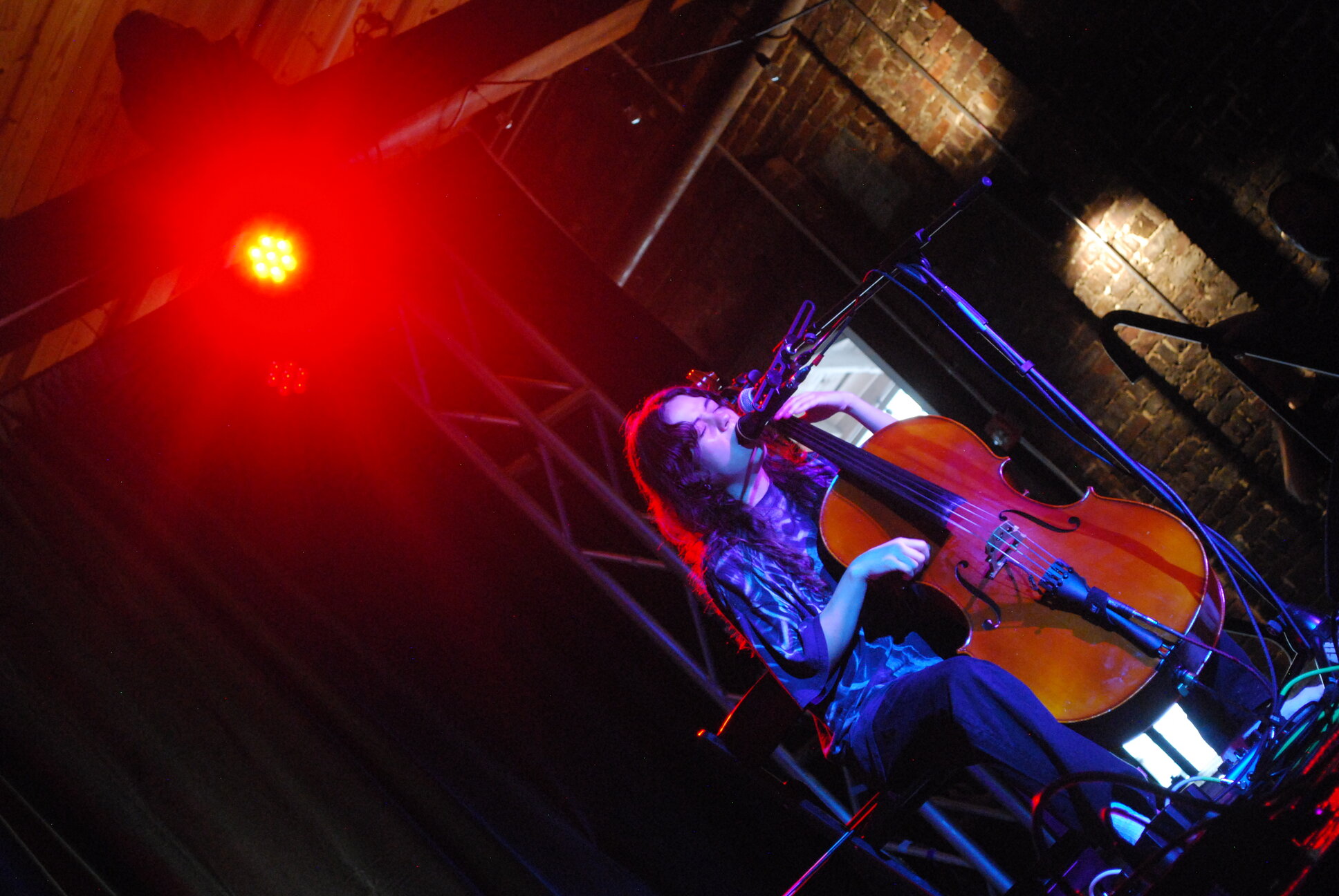
Mabe Fratti was a rock star during her set, and if you’re familiar with her latest album, Sentir que no sabes, you would have been just as surprised as I was. Her work tends to be more experimental, tightly focused on strange tones and elliptical melodies. But at Jackson Terminal she proved that she could bind the two personalities of her music together in a way that was both unexpected and completely natural. Her cello was a force of nature, barreling into the crowd with little heed for what might be left in its wake. Her band matched her intensity, keeping step every second with her madcap string experimentations. Bowed and plucked, her chosen instrument held us aloft, gently ascending at times while hurling us against craggy rocks just a few moments later. We were caught in a whiplash of creative energies, and it was a joy to witness her thoughts come to life.
Wadada Leo Smith’s Radio Light and Orange Wave Electric at The Mill and Mine
It was just a giant party at The Mill and Mine for Wadada Leo Smith’s Radio Light and Orange Wave Electric. Aided by a conclave of musicians — including Deerhoof’s Greg Saunier — the groups (Radio Light and Orange Wave Electric) interpreted some of the scores that Smith has created and other pieces like Fire Illumination and Obama On The Bridge. It was noisy, hectic, and a pure creative chaos. Well, maybe not chaos in the sense that it was unfocused, but the music wandered of its own accord, with the musicians doing their best to wrangle it into certain shapes and spaces. It was a revelation of communal musical intuition and rhythmic instinct.
Rufus Wainwright at the Knoxville Civic Auditorium
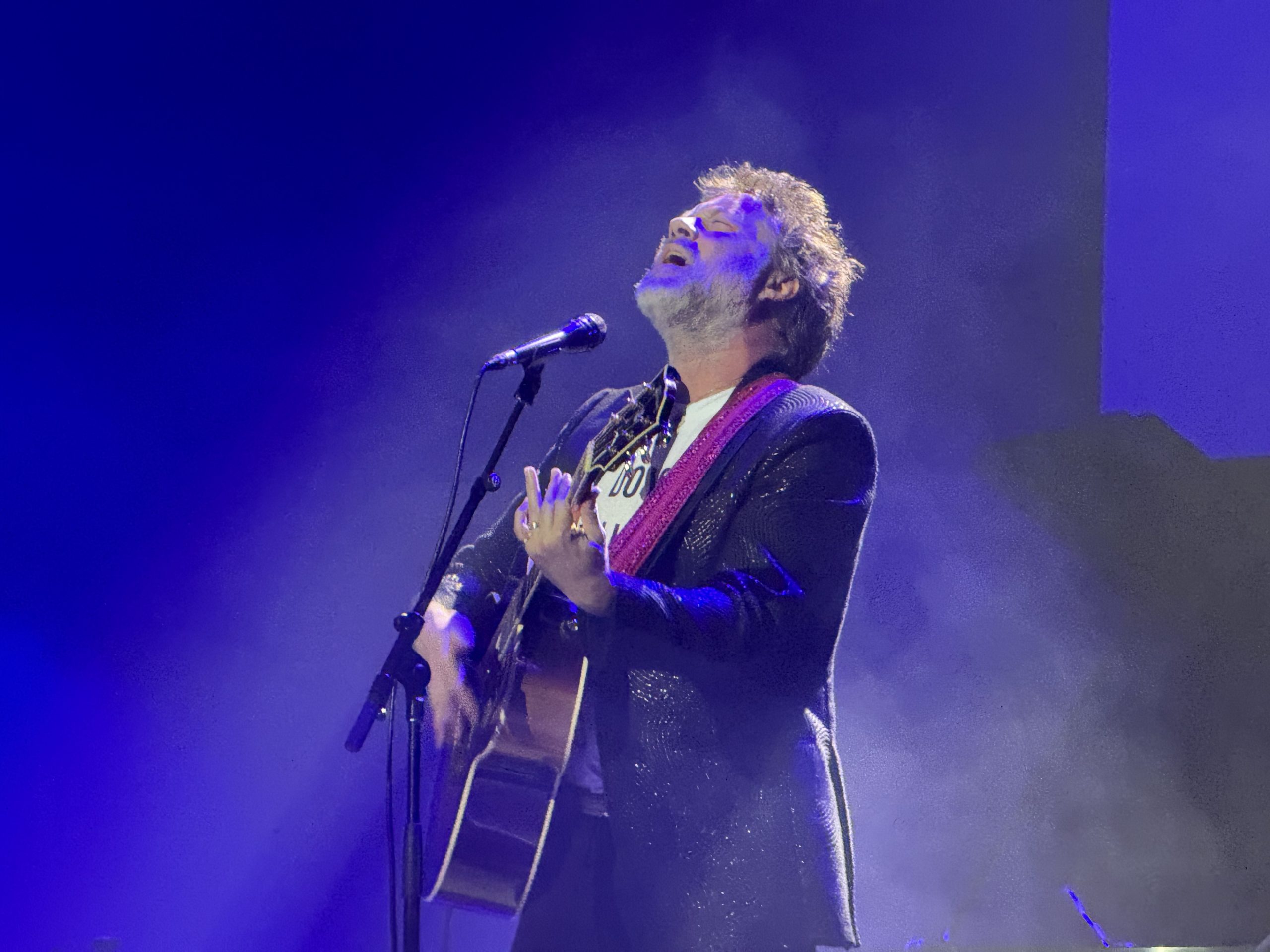
And to close out the festival, we have Rufus Wainwright. I’ve been looking forward to seeing him for some time, and with his recent sets including some Leonard Cohen covers, I was ecstatic. He was charming and humorously caustic at times, always the consummate storyteller and soothsayer that we’ve come to know over the years. He drew from a wide berth of albums and projects, never staying in one place for very long.
I was hoping for something from his debut album, though I knew that he has fairly constant setlists which don’t change all that often. Despite that, songs like “Gay Messiah”, “Can I Cry Myself Awake”, a collage of “Old Song” and “Early Morning Madness”, and “Hollywon’t” were all vulnerable and occasionally bitter and wonderfully vexatious. He brought out Texas singer Amber Martin for “I Want You to Be a Real Man”, mentioning that they were heading to Nashville to record together after the show.
I was particularly pleased when he played “Poses” and “Cigarettes and Chocolate Milk”, two of my personal favorites, and his cover of Cohen’s “So Long, Marianne” was quickly paced and delightful. But it wasn’t until the end of his encore when he began playing the first few notes of Cohen’s “Hallelujah” that the tears really began to flow. They were tears of joy. Maybe tears of sadness at the realization that Big Ears was coming to a close. But it was a release. A letting go. And I couldn’t have imagined a better ending to my time in Knoxville than hearing this elegiac song. The air was cool outside, a sharp contrast to the warmth in my heart. Big Ears was done. And I can only count down the days until next year.

